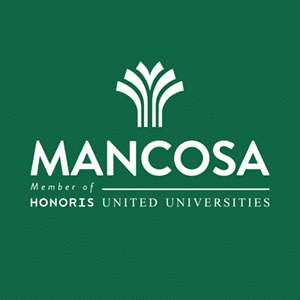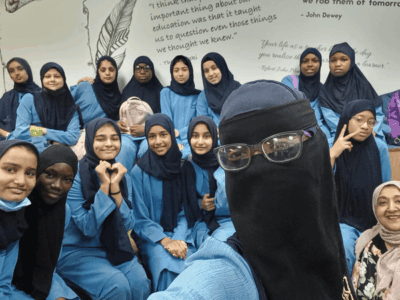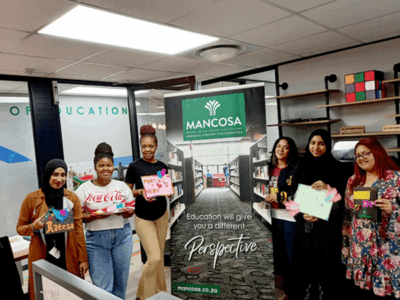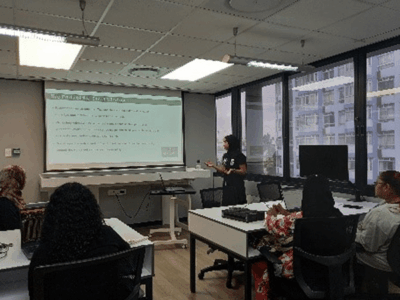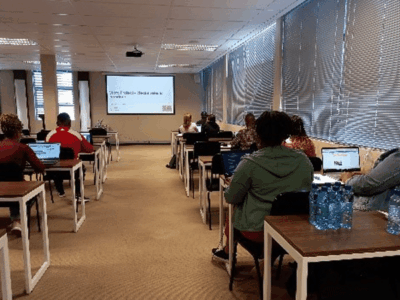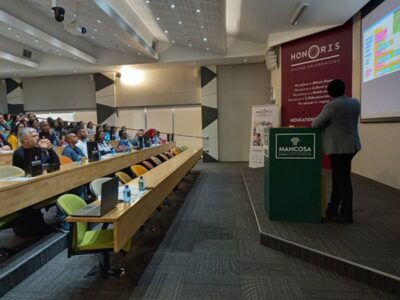Robotics and Coding Winter School 2022: Durban
The MANCOSA School of Education’s iTEACHlab hosted its very first Robotics and Coding Winter School for Grade 7 to 12 learners in the Durban region.

The MANCOSA School of Education’s iTEACHlab hosted its very first Robotics and Coding Winter School for Grade 7 to 12 learners in the Durban region. The 4-day Winter School programme took place from 28th of June 2022 to 01st July 2022 at the MANCOSA School of Education’s iTEACHlab in central Durban. The aim of the Robotics and Coding Winter School is to develop collaboration, creativity, communication, and critical-thinking skills among learners. In attendance, there were 29 learners from 20 various schools in the Kwa-Zulu Natal and one school from Gauteng.
While this winter school was directed to the KZN region, we had a participant that came from the Gauteng region. A grade 9 learner traveled all the way from Pretoria to Durban, especially for the Robotics and Coding Winter School. This shows the potential value that is perceived from this great initiative.
Each day of the Winter School consisted of different activities aligned to the Robotics and Coding CAPs curriculum.
Day One: Build and Code a Robot
13 learners attended the build and code a robot session. They were grouped into four groups to promote collaboration and teamwork. The groups were given a LEGO EV3 robotic kit and then learned about each of the components of the kit. Learners then built the robot using the various components and applied computational-thinking skills like decomposition, pattern recognition, abstraction, and evaluation. Learners were shown how to program the robot in order to make it move forwards, and backwards, perform rotations, and output sounds. Furthermore, they were shown how to program the robot sensors. To show the relationship of the course to real-world application, learners were tasked to create a city using LEGO blocks and program the robot to maneuver around. Other tasks included making the robot move around a horseshoe-shaped table in the Science Hub as well as a hexagon-shaped table in the Mathematics Hub. At the end of the day, learners gave amazing positive feedback regarding their experience.
Day Two: Coding with Scratch
Initially, our target number of learners for Day 2 were 16. However, we exceeded our target by four learners, totaling a number of 20 learners. After the registration session, the students had an icebreaker designed to teach learners how to follow instructions. Learners were then placed into five groups and given a task to come up with a creative name, logo, and mission statement for their team.
The learners were then introduced to the Scratch platform. Scratch is a block-based programming platform designed to encourage creativity and problem-solving skills. Learners were taught about the various interface features and tools on Scratch such as blocks, sprites, scripts, costumes, and backdrops. They then created their very first project in Scratch where they demonstrated the ability to choose different sprites, and change various backdrops and costumes.
The session aimed to encourage independent learning. Hence, the teams were asked to watch and replicate two YouTube Scratch projects in 1 hour. All the groups managed to learn and recreate the YouTube projects. To further see how learners can seek information and apply the concepts learnt, learners were given a team project in which they were allowed to use the internet resources to get project ideas and then be creative in generating new version of the projects.
Presentation skills were among key skills encouraged in the session. To cultivate these skills, teams were asked to conceptualise and present their projects. Learners then anonymously voted for their favourite scratch project and prizes were presented to the winning team before closing the day.
Day Three: Experiencing Augmented Reality and Virtual Reality and its role in education
A total of 25 learners attended Day 3. The first activity was an icebreaker that sought to cultivate, Collaboration, coordination and team work. In this activity, learners were grouped into teams of 4 each individual was given 2 pieces of string and the team was given one ball. This challenge was for the learners to strategically carry the ball from one Hub, using the strings and place it on a paper cup placed in another area of the lab.
For the first part of the session, the teams of learners downloaded the MANCOSA iTeach app on their smart devices. Each team of learners began their Augmented Reality experience using the MANCOSA iTeach app and scanning of the door markers, and the Evolution Wall of Education. After the snack break, each team experienced the Augmented Reality in the Science, Robotics and Culture Hubs. After lunch, learners explored the world of virtual reality using different Virtual Reality headsets as well as an Oculus headset. These technologies showed learners how education is changing to more immersive environments.
Day Four: Lego Collaboration and Communication Challenge and Certificate Awarding Ceremony
25 students attended the fourth and final day of the Winter School programme. Learners were grouped into Five teams, they then designed, created logos and presented their team names. The teams were presented a Lego design challenge that required each of the team members to adopt a specific role such as a Looker, Runner, Builder, and Marketer. This activity promoted communication, time management, collaboration and teamwork. The following describes the role of each of the team members:
Looker — This learner was be able to view the model and was responsible for telling the “Runner” exactly what the model looks like. Fun fact: The Looker was be given between 12 seconds – 60 seconds to check out the model.
Runner — This learner was not be able to see the model, but received information from the “Looker” and took it back to the “Builder.”
Builder — This learner was not allowed to talk and only received information from the “Runner” to build the LEGO model.
Marketers — Two learners were tasked with branding their team’s construction, taking into account the “Runner’s” description, telling the story of the product their team was building and why stakeholders e.g. (MANCOSA students) should be interested in the construction.
The teams then presented their Lego models to the audience and marketed the product. This allowed for to develop public-speaking skills as well as to develop their self-confidence.
Teams were then presented certificate of achievement and the winner of the Lego design challenge was presented with gifts. Lastly, a pop quiz on the iTEACHlab was also conducted to see how much they had learnt over the four days. Learners won prizes for answering questions correctly. Overall, the Robotics and Coding Winter was a success, with learners having an extraordinary learning experience and being able to forge new friendships and gain valuable 21st-century learning skills. It was very interesting to see that the learners did indeed understand the concepts of the iTEACHlab and how activities were grooming the 21st-century skills.
